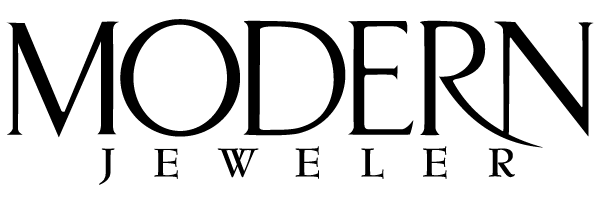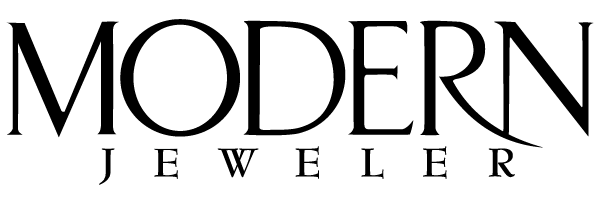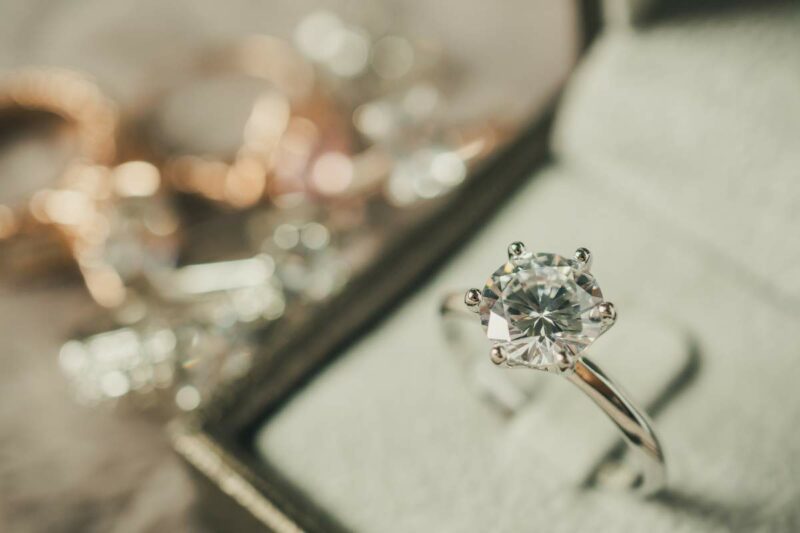The Knot’s 2023 Real Weddings Study, examining the preferences and behaviours of nearly 10,000 US couples married in 2023, offers a comprehensive glimpse into the evolving wedding scene.
This research underscores a significant transition towards more experiential celebrations, deeply influenced by popular culture and an emphasis on personalisation. For jewellers and the wider jewelry industry, these findings suggest a shift in consumer preferences that could impact future trends and demand.
Key Findings and Engagement Rings Stats

Diamond Dominance: Diamonds continue to reign as the preferred stone for engagement rings, with 85% of engagements featuring a diamond. However, a notable shift towards diamond solitaire styles suggests evolving tastes that jewellers should monitor. 85% favor diamond rings, with a notable preference shift towards diamond solitaires and away from side stones since 2015.
Rising Stars: Moissanite’s popularity is up, particularly among Gen Z couples, representing a significant share among non-diamond choices.
Metal Preferences: Yellow gold’s resurgence highlights changing consumer preferences, potentially affecting demand and stock strategies for jewellers.
Ring Shapes: Round shapes have declined in favor, while oval and pear shapes are increasingly popular.
Growing Popularity of Larger Rings: In 2023, the trend for larger engagement rings has continued to rise, with one-third of rings now exceeding two carats. This represents a 10% increase from 2019, highlighting a significant shift towards more substantial pieces.
The Rise of Lab-Grown Diamonds: Lab-grown diamonds have played a pivotal role in this trend, thanks to their affordability compared to natural stones. Approximately one in three couples now prioritize the inclusion of a lab-grown stone in their engagement ring. Remarkably, nearly half of all engagement ring center stones in 2023 were lab-grown, marking a nearly fourfold increase from the 12% reported in 2019.
Wedding Planning and Guest Experience
Vendor Engagement: With couples hiring an average of 14 vendors for their weddings, there’s a marked emphasis on creating memorable experiences. Jewellers could explore partnerships with wedding planners or other vendors to enhance visibility.
Personalisation and Inclusivity: The push towards highly personalised weddings suggests that jewellers offer customisation options to meet this demand. Moreover, catering to diverse markets, including LGBTQ+ and diverse-owned businesses, could expand clientele.
Looking Ahead: 2024 Trends
Cultural and Personal Influences: Inspirations from popular culture and a desire for authenticity in weddings signal the need for jewellers to stay abreast of trends and offer relevant designs.
Colour Trends: The popularity of specific colours like green and blue for 2024 weddings may influence jewelry design and marketing strategies.
Conclusion: A Transforming Industry
The 2023 wedding industry trends highlight a dynamic shift towards personalisation, inclusivity, and experiential elements, driven by changing consumer values and priorities. For jewellers, adapting to these trends means offering diverse and customisable options, engaging with the wider wedding vendor ecosystem, and understanding the cultural zeitgeist influencing couples’ choices. The industry is poised for growth, with opportunities to innovate and cater to the evolving preferences of modern couples.






